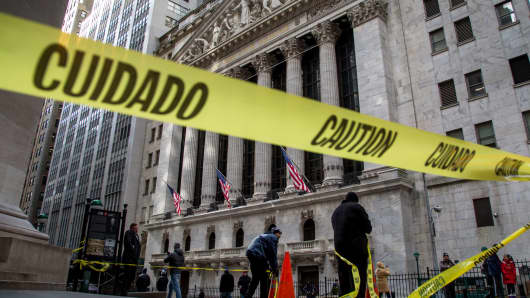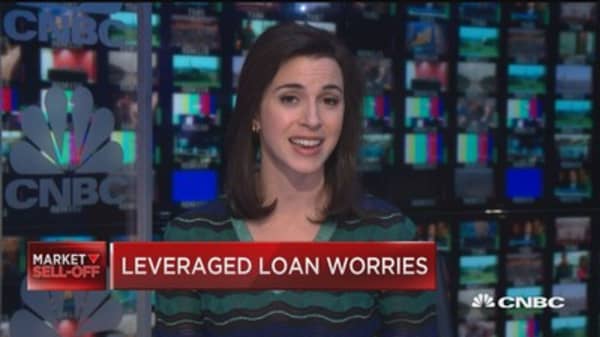
Leveraged loans, which helped cause the last financial crisis and have drawn fear that they could be a spark in the next one, are showing further signs of cracking as investors flock from the market and volumes dry up.
Mutual funds that track the debt issued traditionally to companies with weak balance sheets and poor credit have seen $18 billion in outflows over the past 10 weeks, including $949 million for the period ended Jan. 23, according to data Refinitiv’s LPC team released Tuesday.
For perspective, the funds have total assets now of $148 billion. The funds have seen investors pull 16 percent of assets since the space peaked in September at $175 billion.
Performance of corporate debt actually has been decent: As a group, bank loans have managed to eke out a 2.2 percent return so far in 2019, according to Morningstar. The returns are positive though well below the performance of most other fund categories.
However, investors appear to be getting edgy after some high-profile warnings about potential danger spots.
Former Federal Reserve Chair Janet Yellen, for instance, said in December that the leveraged loan industry, which now boasts around $1.3 trillion in assets, is one area where risk-taking could exacerbate an economic downturn. Moody’s Investors Service, which rates the debt, said covenant quality, or the protection banks and investors get for the loans, has reached historic lows.
Big outflows
As the warnings were being issued, both investors and companies looking for funding left the market.
Mutual fund outflows in December alone hit $15.4 billion in December, according to Refinitiv. The firm’s LPC group surveyed market participants and found they expect issuance to be weak this year, with most looking for it to be in a range of $90 billion to $110 billion. That would be a massive drop-off from 2018, which saw $274 billion in issuance during the first half alone, according to LeveragedLoan.com.
The key risk point for the industry is securitization, or the bundling of the loans into offerings such as collateralized loan obligations.
Yellen mentioned that danger specifically, saying the CLO industry for leveraged loans looked a lot like the subprime mortgage offerings that led up to the financial crisis. Wall Street sells CLOs to investors looking for yield; during the crisis, the securities became so opaque that investors had a hard time deciphering what they even held. The issues over securitization helped spark a lack of confidence that led to liquidity drying up in financial markets.
Refinitiv said CLO issuance hit a record $128 billion last year, though December saw the market sink to a two-year low.
One final issue hitting the industry has been the Federal Reserve.
Higher interest rates make the products more attractive, but central bank officials in recent days have become more tepid about the pace of increases. The possibility that the Fed may enact any hikes this year is another problem for the industry, Refinitiv LPC said.
The firm said the appetite for issuance to Athenahealth and Dun & Bradstreet, which launched earlier this week, will provide signals for this year’s market.
[“source=cnbc”]




